Bruges Triennial 2018: floating pavilions and a concrete gateway to the afterlife
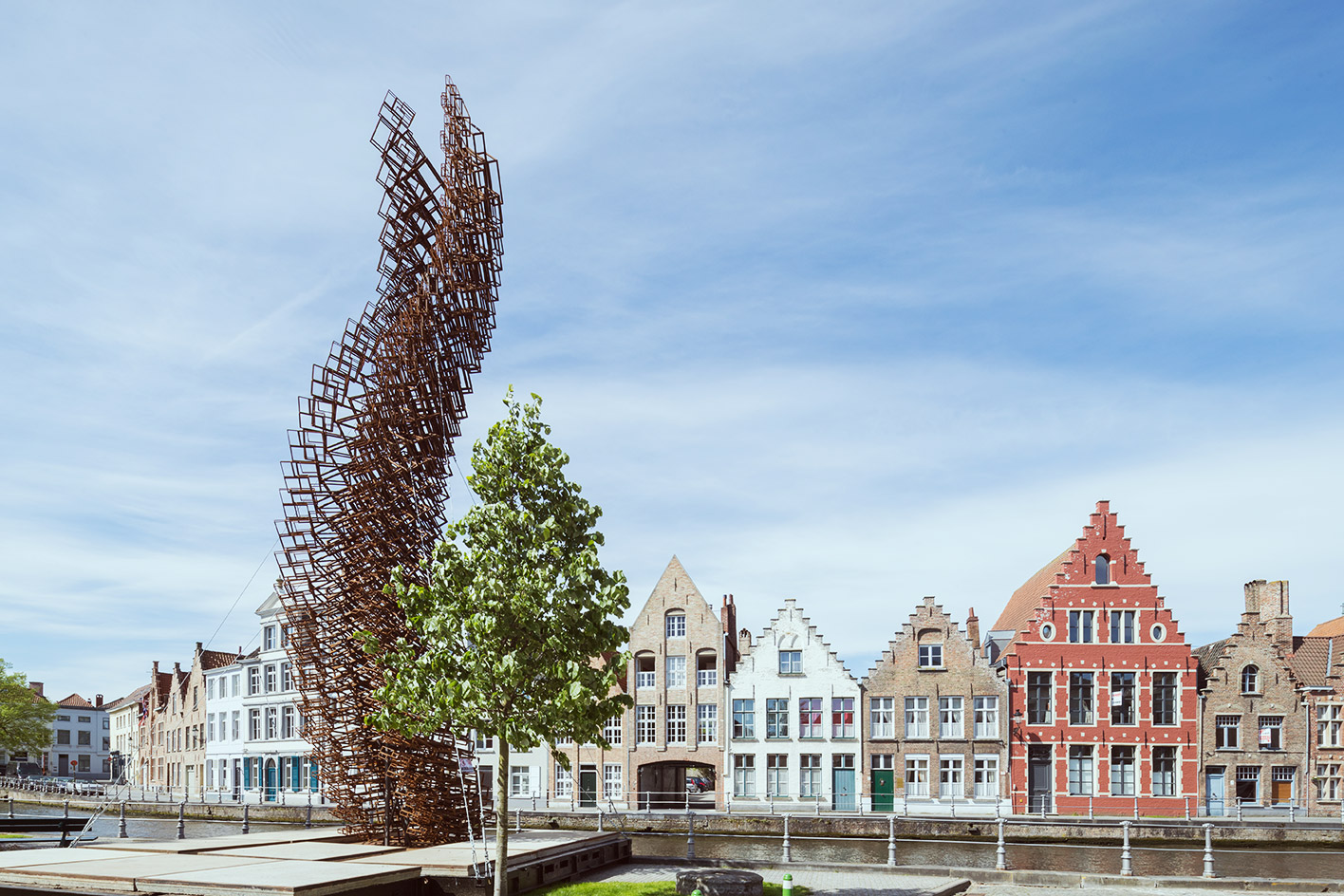
In a city famed for its postcard-ready vistas and perfectly preserved historic architecture and waterways, the Bruges Triennial is a welcome burst of contemporary creativity and unexpected urban interventions. As you walk past a medieval almshouse or over a cobbled stone bridge you will suddenly see a tall curving Corten steel sculpture (by US artist John Powers), a narrow geometric bridge (by Polish artist Jarosław Kozakiewicz) or a sinuous organic bright orange and red translucent floating pavilion (that will become the platform for a public pool) by Spanish architectural duo SelgasCano.
For the Triennial’s second edition, the theme ‘Liquid City’ is based on a concept by Polish-British sociologist and philosopher Zygmunt Bauman, who theorised globalisation and mass consumerism indicated a state of constant flux, fluidity, instability and transition. Though this could be construed negatively, he also believed humans were infinitely adaptable and flexible. To wit, the 15 invited artists and architects have responded to the Triennial’s theme in vastly different ways, ranging from the literal – almost every installation or sculpture is located on or near the city’s canals – to the more abstract or metaphorical, challenging the viewer to embrace a transformation, or even to become part of the creative process.
The latter is very much the case in German architecture firm Raumlabor’s House of Time project that is slowly transforming an old industrial site in town with the help of young people who have so far built a treehouse, a hot tub, an outdoor garden and various spaces for learning and collective problem-solving. The Triennial’s co-curator Till-Holger Borchert talks about the Triennial as an opportunity to create ‘a more sustainable form of tourism’ for the Flemish town of Bruges and become a magnet for ‘creative thinkers and doers’. In a small city regularly engulfed by seven million annual visitors on whistle-stop European tours this is a welcome proposition.
Arguably the most interesting exhibit of the Triennial was not an installation or structure but a research piece on show in the renovated 14th-century Poortersloge (Burghers’ Lodge). Here, Brussels-based design collective Rotor’s contribution focused entirely on the Chinese mitten crab. With the help of videos, newspaper excerpts, photos, ship models and even live crabs, the architects explore how the crab arrived in Europe in the early 20th century via the ballast water of ships from China, its proliferation in European waters (including the canals of Bruges) and how it is viewed today.
‘In one part of the world it’s a delicacy, in other parts of the world it’s a pest,’ says Rotor founding partner Lionel Devliege. The arrival of new and invasive species in foreign locales is examined and perhaps most timely is a section of the show dedicated to the xenophobia and fear of Asia that has been projected on to this crustacean through the decades.
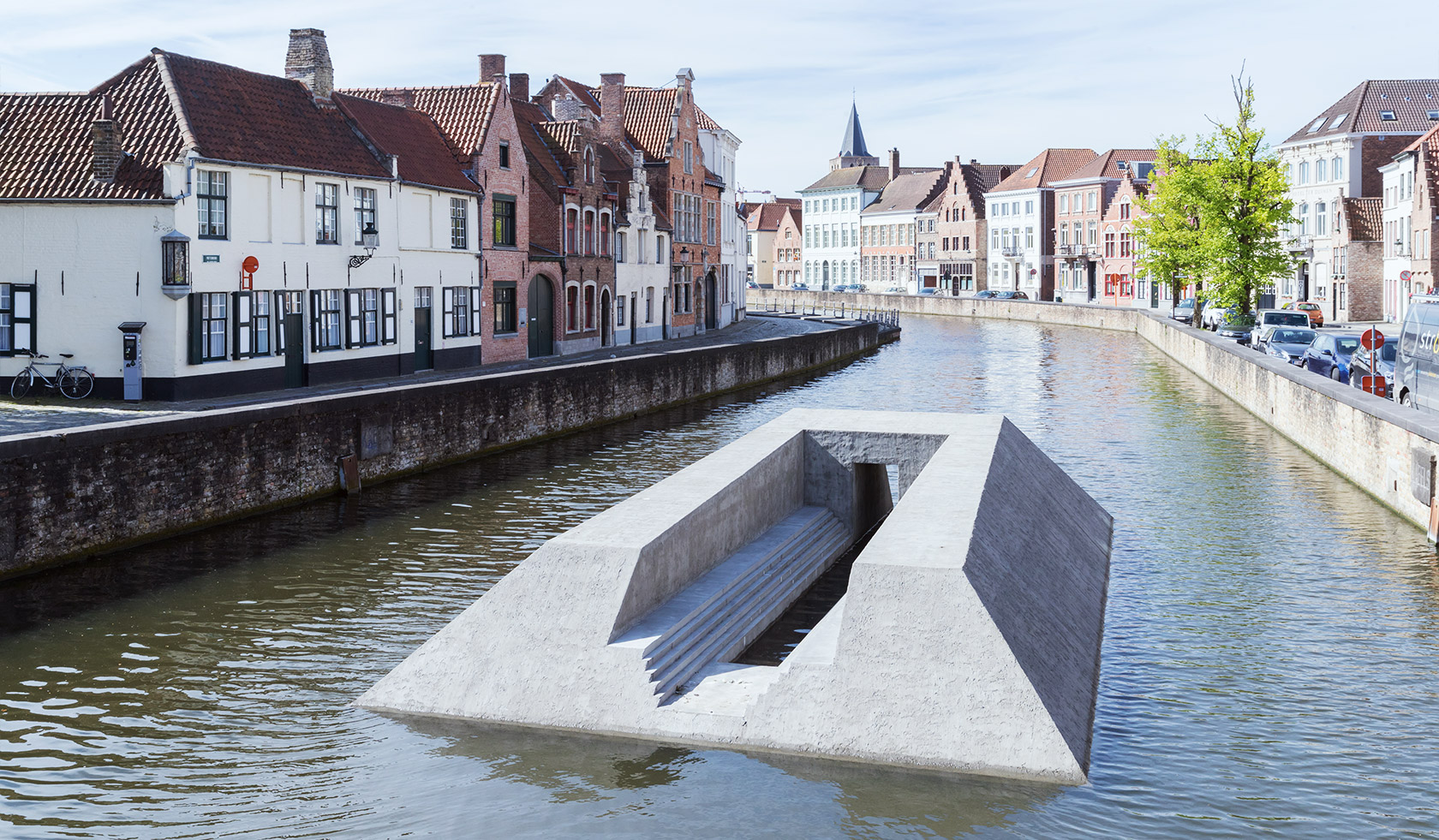
Acheron I, 2018, by Renato Nicolodi. Acheron, derived from the Greek word achos, in mythology symbolises the ‘river of sorrow’. The mythical river is the way to the underworld, where the dead cross over under the guidance of Charon.
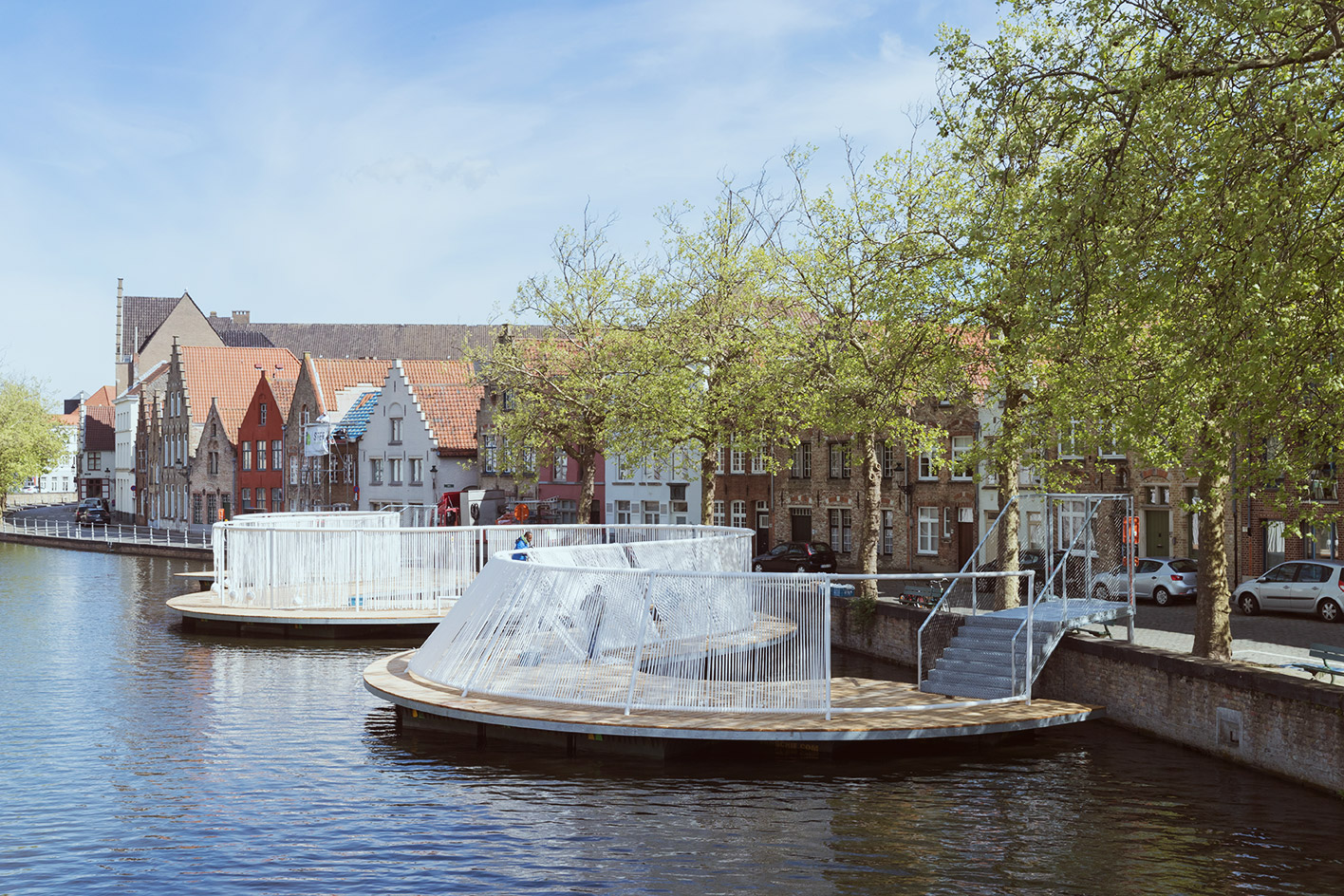
The Floating Island, 2018, by OBBA. With this structure, Korean architectural firm OBBA wished to create an active public space within the Bruges city centre.
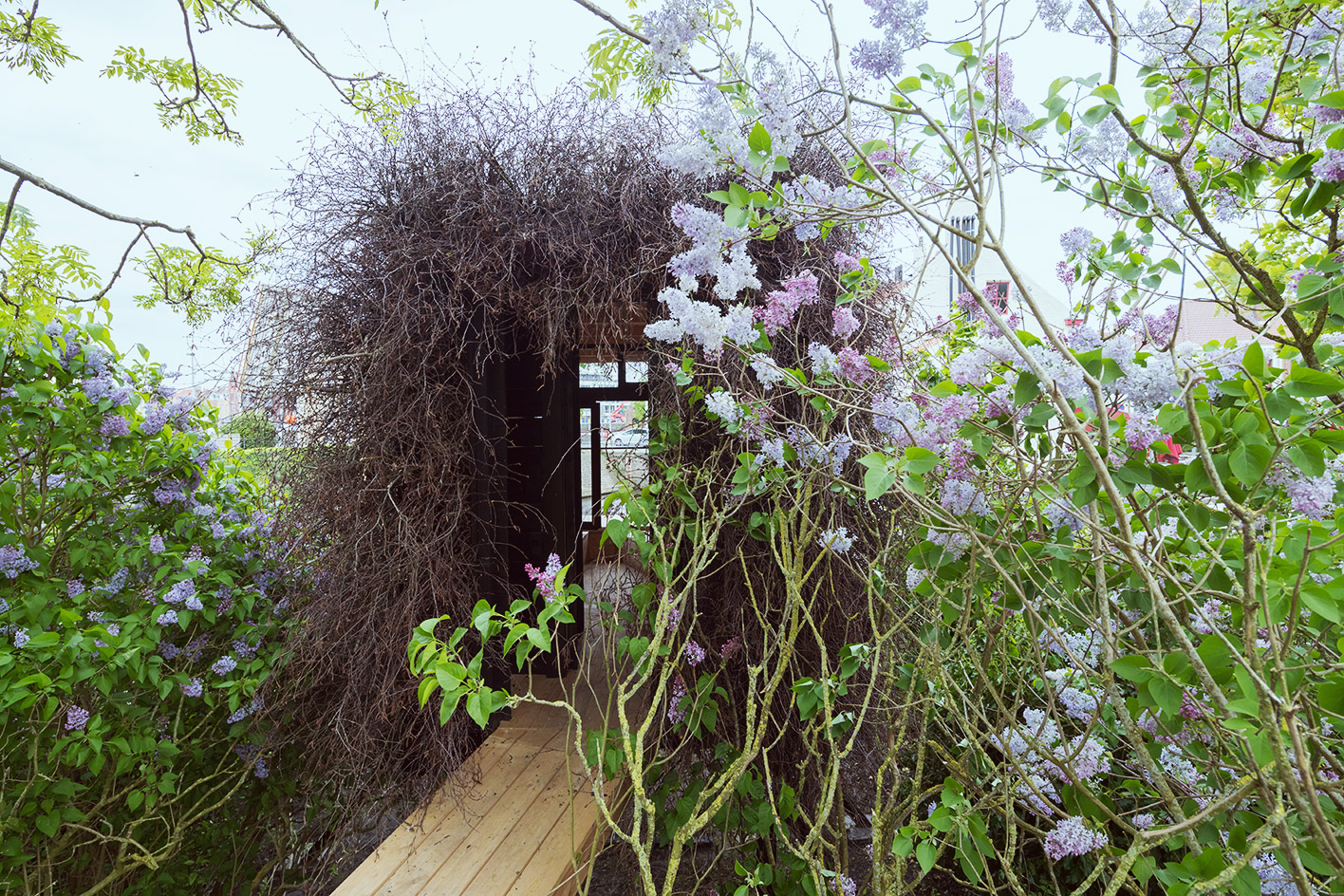
House of Time, 2018, by Raumlabor. On an old industrial site along the Ringvaart, the German firm went to work with the Bolwerk and the Brugge(n) organisations for young people.
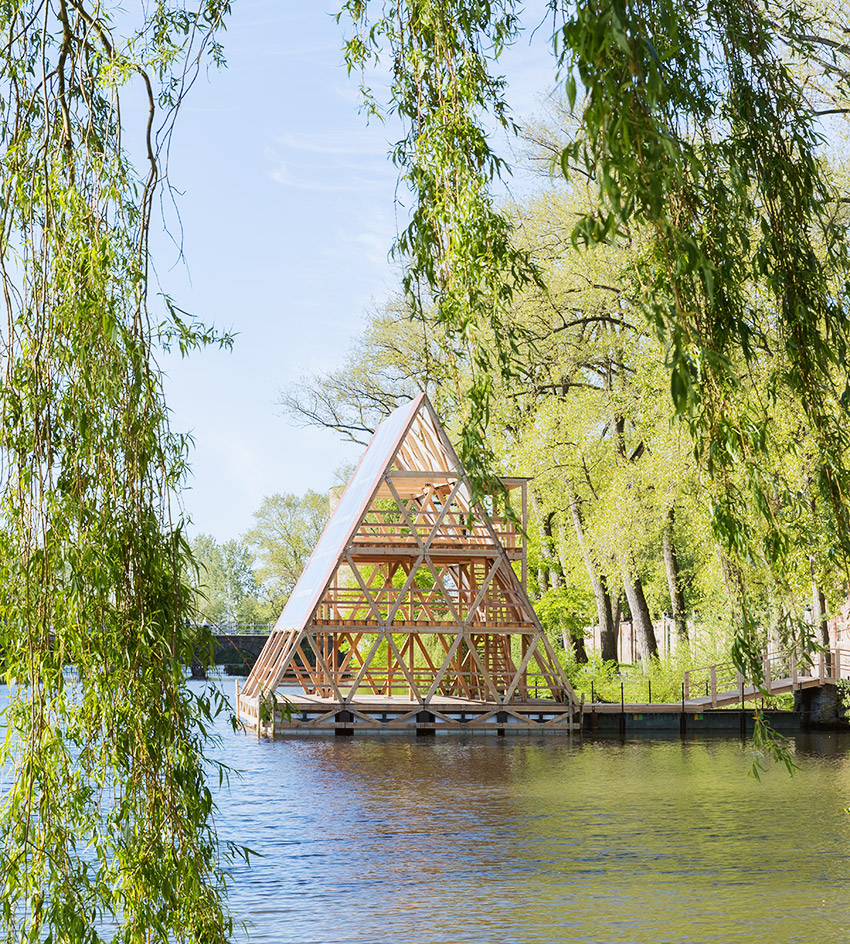
MFS III, 2018, is NLÉ’s third prototype and iteration of the Makoko Floating School in Lagos, Nigeria – an innovative structure developed to address the challenges and opportunities of urbanisation and climate change, particularly in coastal African cities.
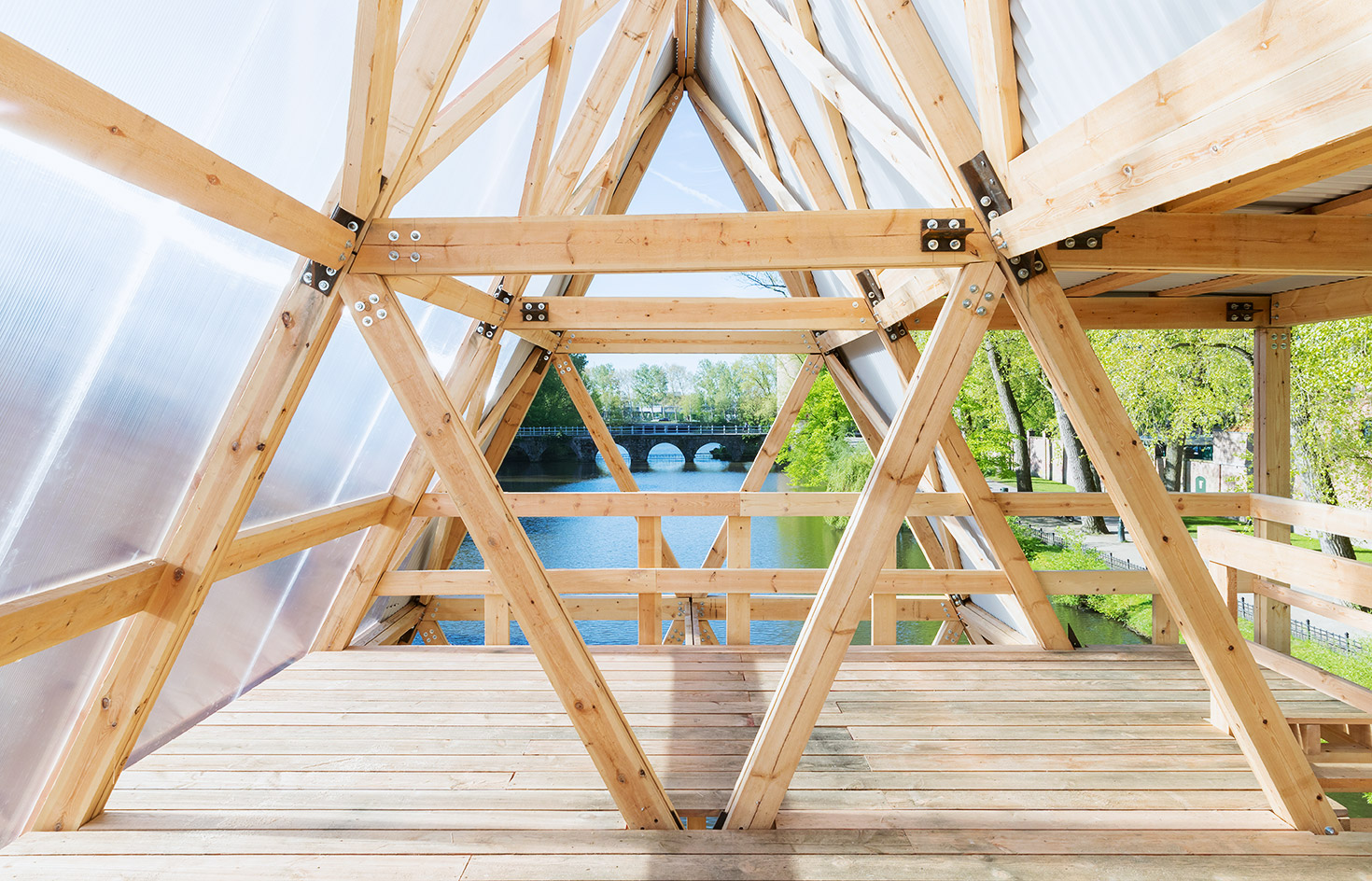
MFS III has been designed as a fully prefabricated, modular, flat-pack, floating building system that can last 25 years.
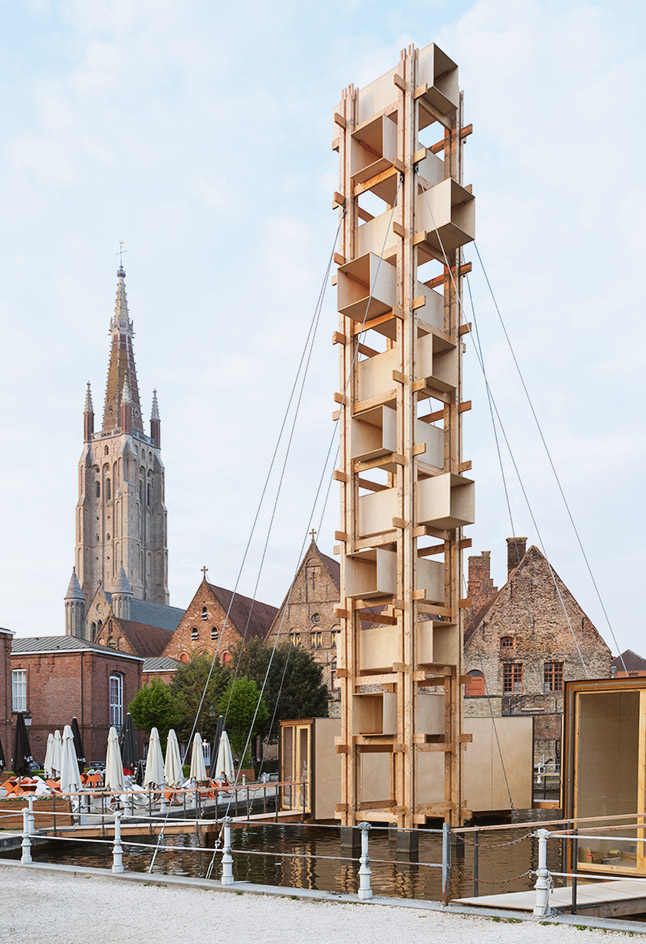
Infiniti²³, 2018, by Peter Van Driessche. Imagined as a vertical living space, the construction is reminiscent of Metabolism, the post-war Japanese architectural movement in which capsules were piled up to form tower blocks.
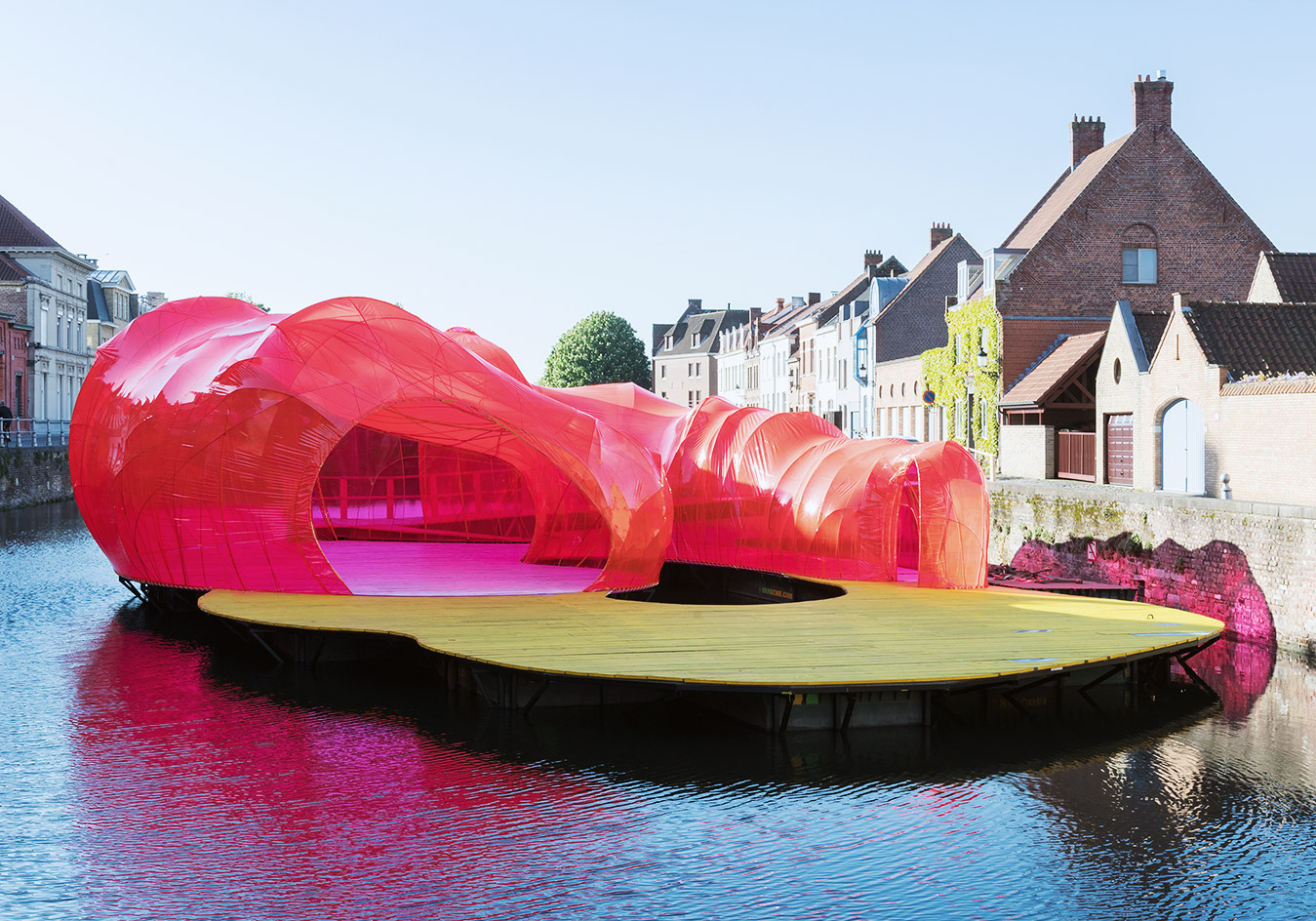
Pavilion, 2018, by Selgascano. The organically shaped structure with pink, orange and yellow transparent walls lends colour to the water.
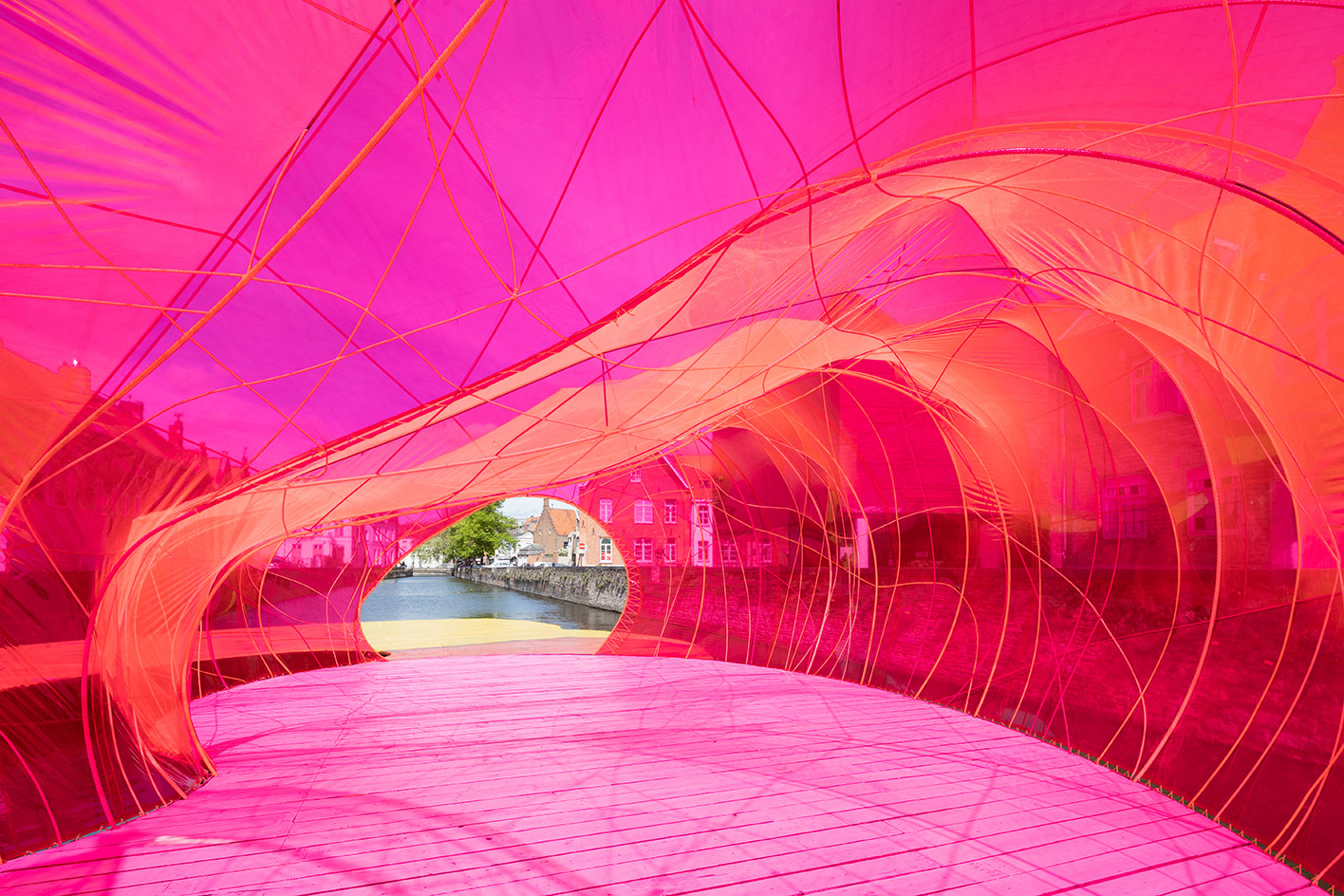
Detail of Pavilion, 2018, by Selgascano.
INFORMATION
Bruges Triennial 2018 runs from 5 May – 16 September. For more information, visit the website
Wallpaper* Newsletter
Receive our daily digest of inspiration, escapism and design stories from around the world direct to your inbox.
Giovanna Dunmall is a freelance journalist based in London and West Wales who writes about architecture, culture, travel and design for international publications including The National, Wallpaper*, Azure, Detail, Damn, Conde Nast Traveller, AD India, Interior Design, Design Anthology and others. She also does editing, translation and copy writing work for architecture practices, design brands and cultural organisations.
-
 Nikos Koulis brings a cool wearability to high jewellery
Nikos Koulis brings a cool wearability to high jewelleryNikos Koulis experiments with unusual diamond cuts and modern materials in a new collection, ‘Wish’
By Hannah Silver
-
 A Xingfa cement factory’s reimagining breathes new life into an abandoned industrial site
A Xingfa cement factory’s reimagining breathes new life into an abandoned industrial siteWe tour the Xingfa cement factory in China, where a redesign by landscape specialist SWA Group completely transforms an old industrial site into a lush park
By Daven Wu
-
 Put these emerging artists on your radar
Put these emerging artists on your radarThis crop of six new talents is poised to shake up the art world. Get to know them now
By Tianna Williams
-
 Inside Jack Whitten’s contribution to American contemporary art
Inside Jack Whitten’s contribution to American contemporary artAs Jack Whitten exhibition ‘Speedchaser’ opens at Hauser & Wirth, London, and before a major retrospective at MoMA opens next year, we explore the American artist's impact
By Finn Blythe
-
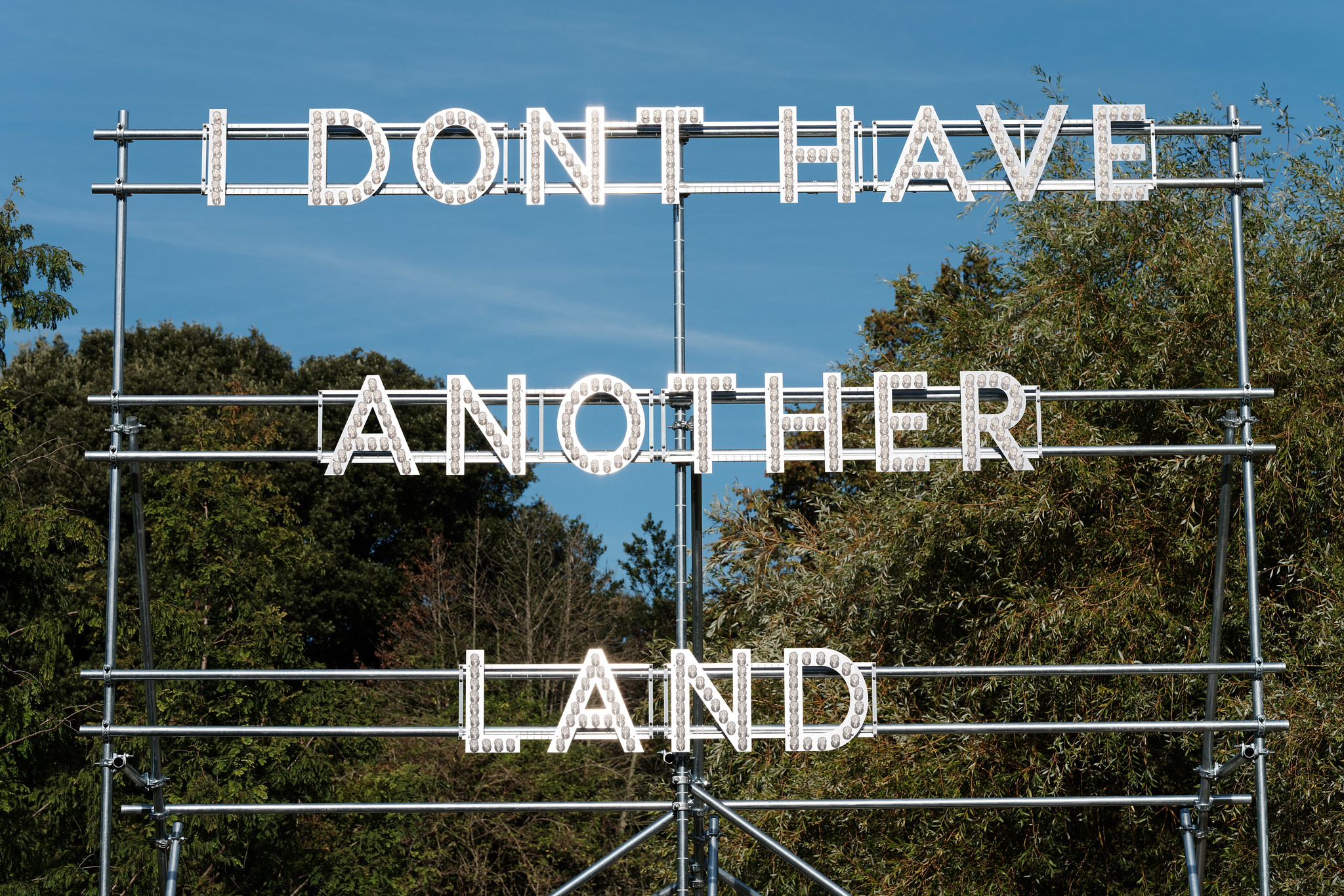 Frieze Sculpture takes over Regent’s Park
Frieze Sculpture takes over Regent’s ParkTwenty-two international artists turn the English gardens into a dream-like landscape and remind us of our inextricable connection to the natural world
By Smilian Cibic
-
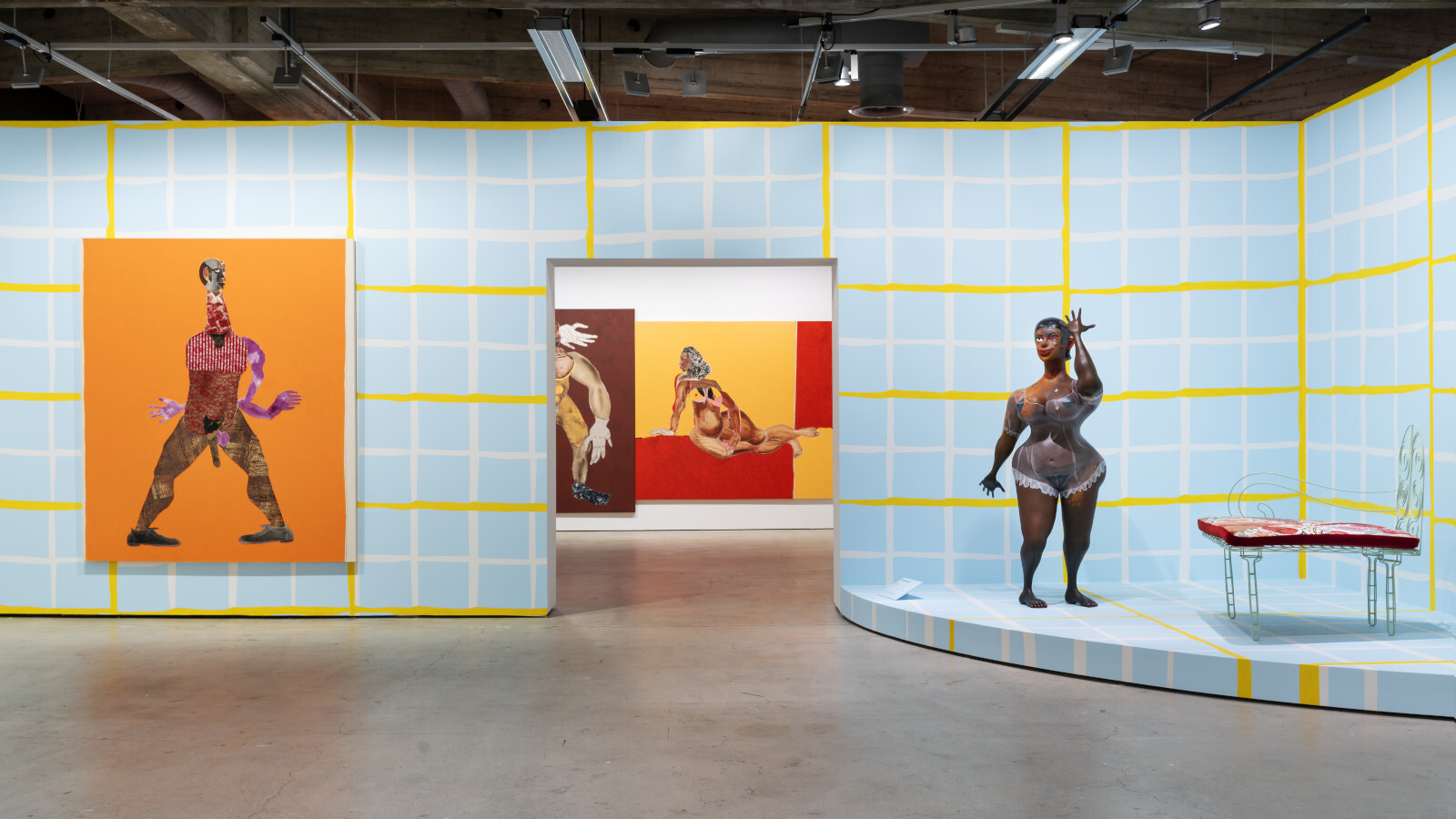 Harlem-born artist Tschabalala Self’s colourful ode to the landscape of her childhood
Harlem-born artist Tschabalala Self’s colourful ode to the landscape of her childhoodTschabalala Self’s new show at Finland's Espoo Museum of Modern Art evokes memories of her upbringing, in vibrant multi-dimensional vignettes
By Millen Brown-Ewens
-
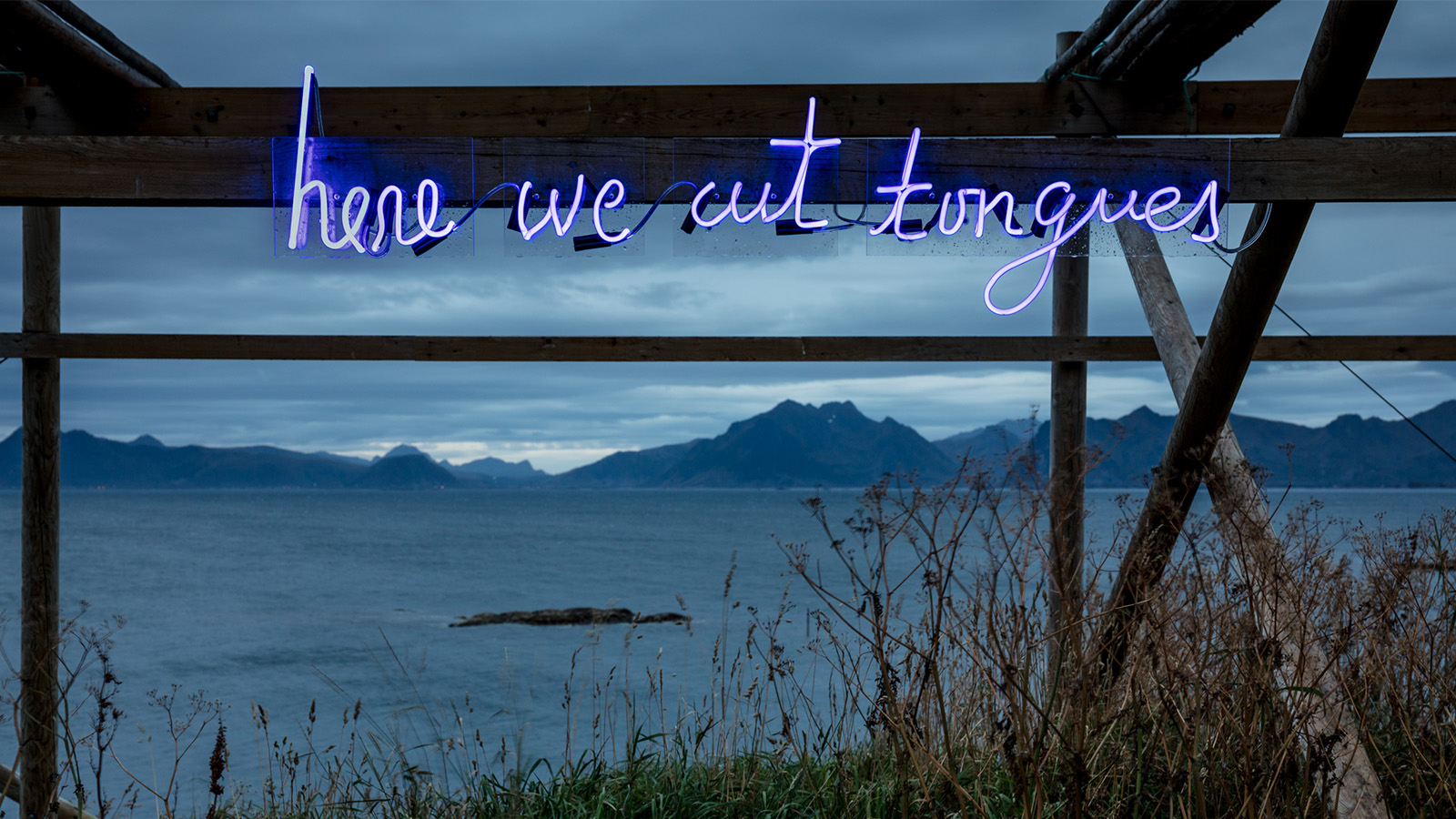 Wanås Konst sculpture park merges art and nature in Sweden
Wanås Konst sculpture park merges art and nature in SwedenWanås Konst’s latest exhibition, 'The Ocean in the Forest', unites land and sea with watery-inspired art in the park’s woodland setting
By Alice Godwin
-
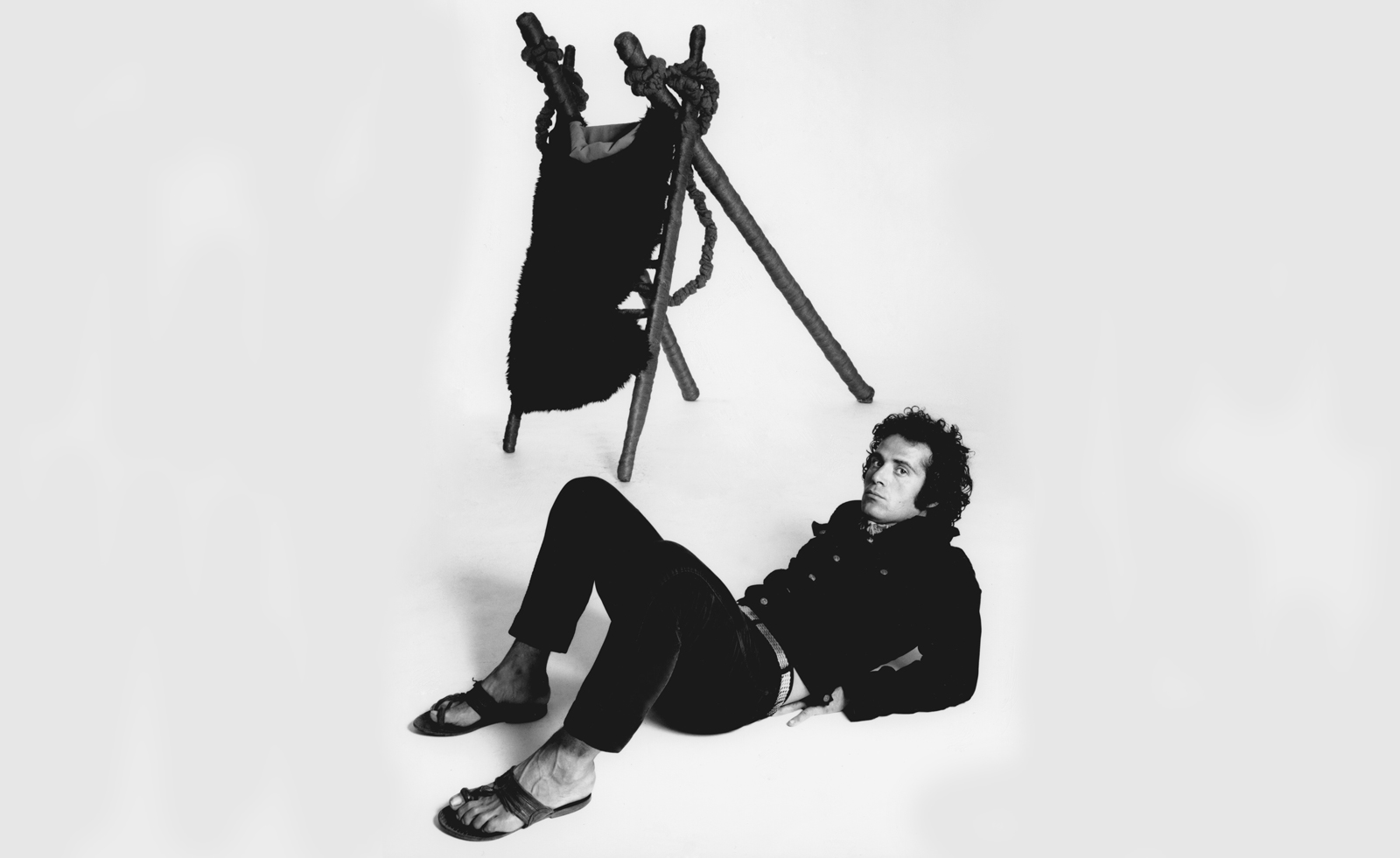 Pino Pascali’s brief and brilliant life celebrated at Fondazione Prada
Pino Pascali’s brief and brilliant life celebrated at Fondazione PradaMilan’s Fondazione Prada honours Italian artist Pino Pascali, dedicating four of its expansive main show spaces to an exhibition of his work
By Kasia Maciejowska
-
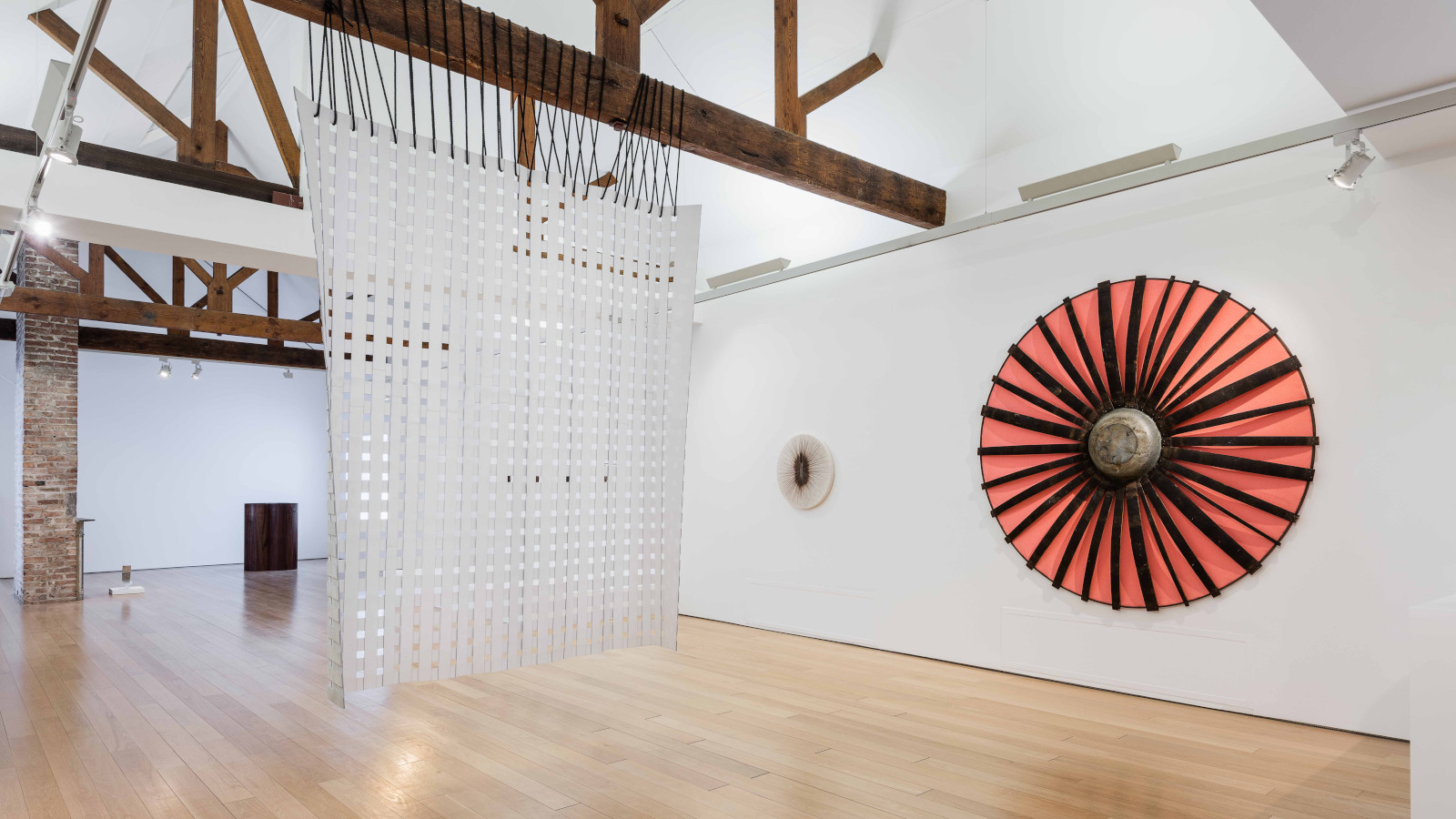 John Cage’s ‘now moments’ inspire Lismore Castle Arts’ group show
John Cage’s ‘now moments’ inspire Lismore Castle Arts’ group showLismore Castle Arts’ ‘Each now, is the time, the space’ takes its title from John Cage, and sees four artists embrace the moment through sculpture and found objects
By Amah-Rose Abrams
-
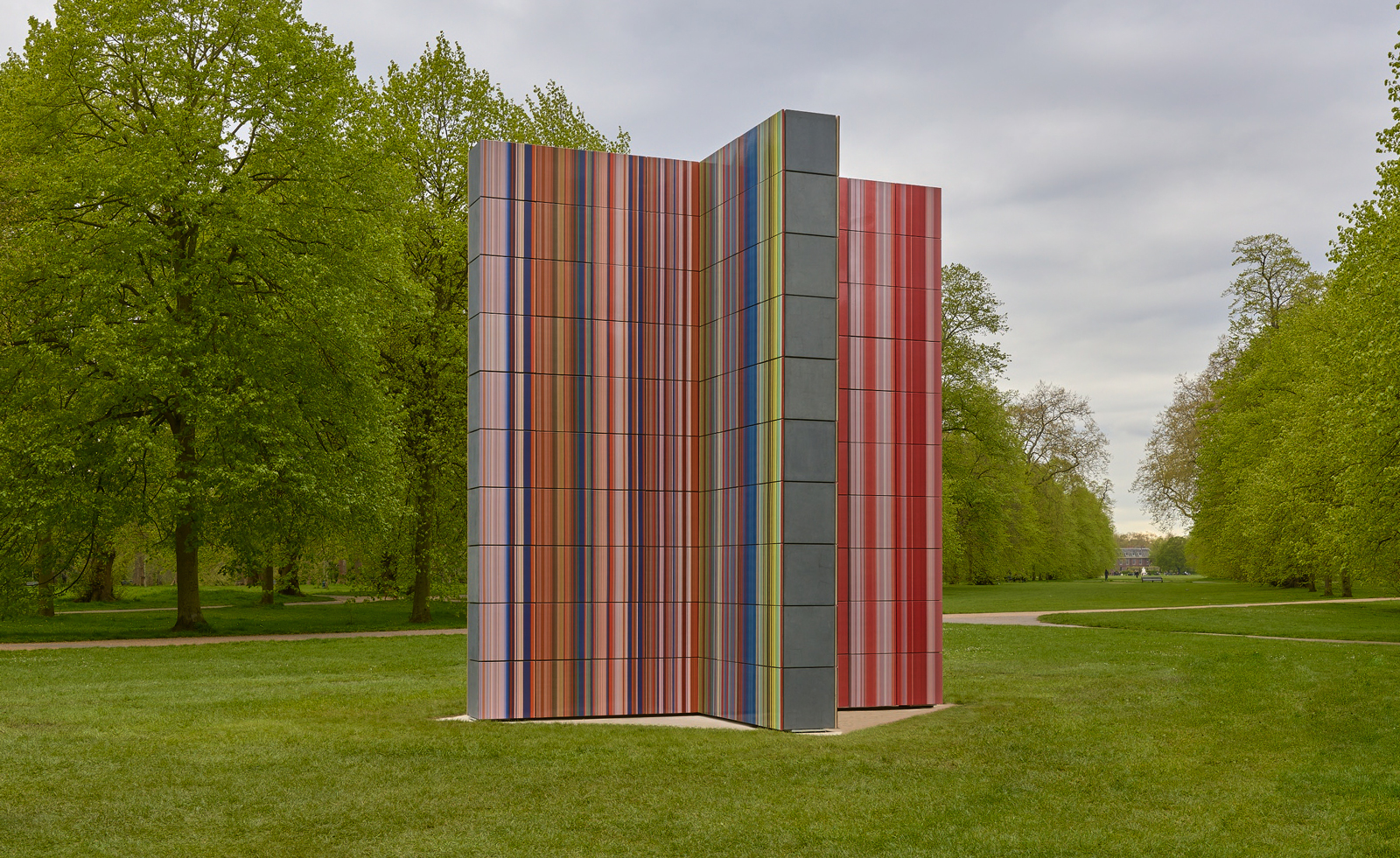 Gerhard Richter unveils new sculpture at Serpentine South
Gerhard Richter unveils new sculpture at Serpentine SouthGerhard Richter revisits themes of pattern and repetition in ‘Strip-Tower’ at London’s Serpentine South
By Hannah Silver
-
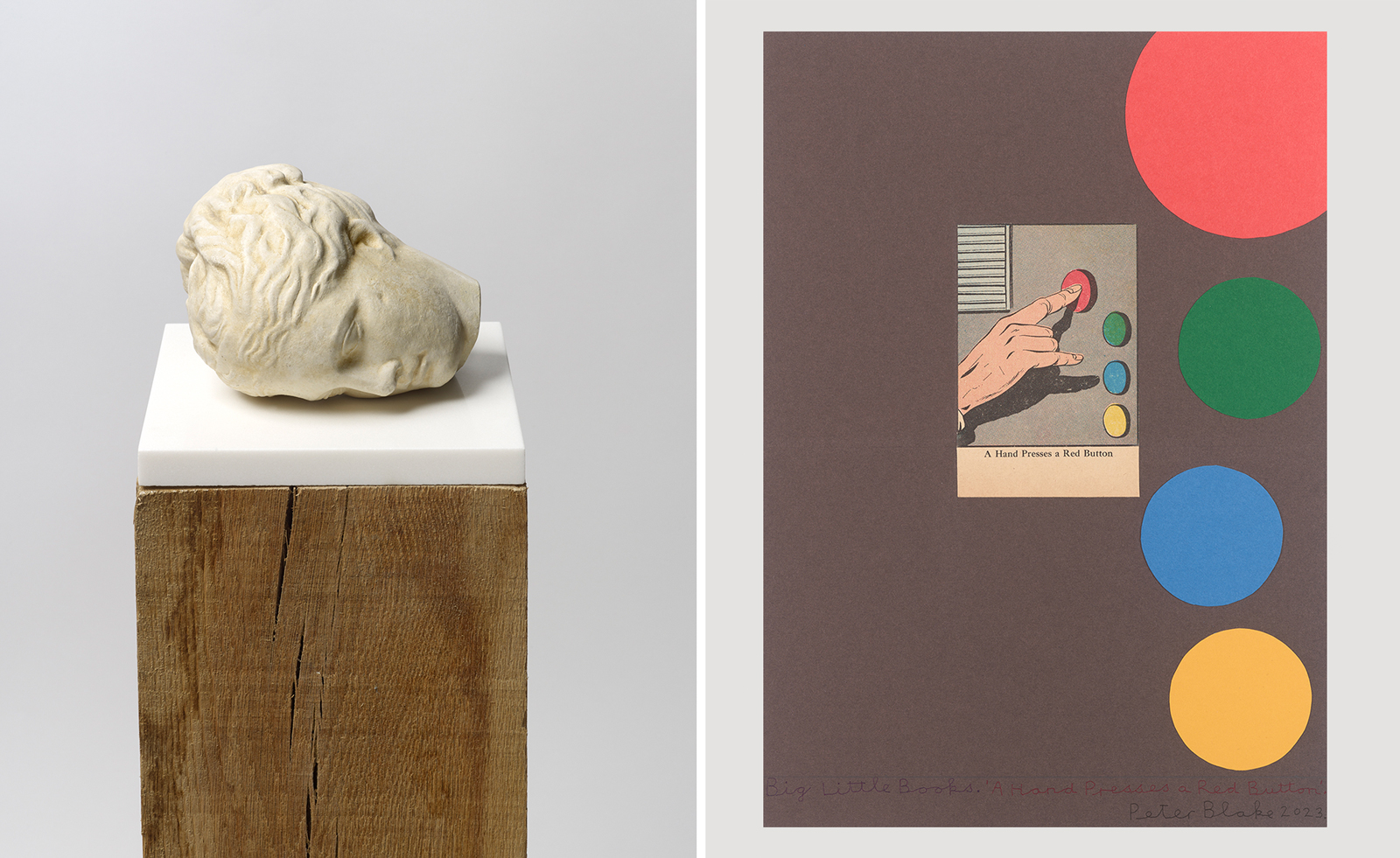 Peter Blake’s sculptures spark joy at Waddington Custot in London
Peter Blake’s sculptures spark joy at Waddington Custot in London‘Peter Blake: Sculpture and Other Matters’, at London's Waddington Custot, spans six decades of the artist's career
By Hannah Silver